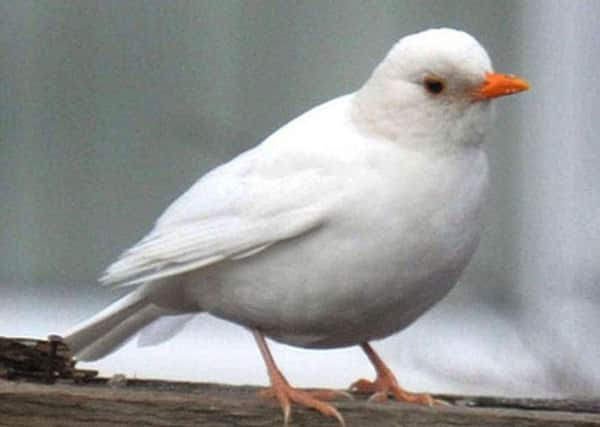Country Diary: A haven of beauty and tranquility


How rapidly this year has advanced. The thrilling fervour of early summer days has abated and we sense a distinct hush in the bird world. By St Swithin’s Day, July 15, harvest time had already begun, and cornfields spread a haze of golden beauty beneath clear blue skies. Large white trumpets of convolvulus or bindweed adorn hedgerows. Their snowy white flowers appear almost luminous in certain lights. The plant climbs by means of entwining stems which coil in anti-clockwise direction.
Whilst visiting Michael’s brothers John and Graham, they told us of a pure white albino blackbird seen up Ganton Hill. Blackbirds are very susceptible to albinism. Individuals often have substantial numbers of white feathers. On such dark birds, these feathers are very obvious. Many years ago, we saw one which had a white crescent around its breast resembling the plumage of a ring ouzel.
Advertisement
Hide AdAdvertisement
Hide AdA distinct croaking near a ‘well’ in our garden prompted a search for the frog, but no luck. Concerned there were so very few frogs or toads this year, we visited Seamer Road mere.
Between Midsummer day and Lammas (August 1) is the flowering season of water-side plants. We made our way to a pool we knew – perfect for frogs and newts. It was very overgrown, and beside the platform was a notice: DANGER – DEEP WATER! Parting undergrowth, I observed one, minute froglet which quickly hopped to safety.
The pool was fringed by a tangle of flowers – the great willowherb, softly downy, and with a fragrance said to resemble codlins (cooking apples), which earned it the name codlins and cream!
Masses of meadowsweet were beginning to fade, along with hedge woundwort, but the highlight was a small colony of purple loosestrife, towering in competition with tall stinging nettles.
Advertisement
Hide AdAdvertisement
Hide AdThe mere was a haven of beauty and tranquillity – a wilderness for wildlife. Yellow and pink water lilies adorned the calm waters, and colonies of glaring yellow ragwort colonised wasteland.
A mute swan led her family of six cygnets in perfect line formation, to another site. The juveniles were growing up, still grey-brown in colour, but more white feathers will grow during next winter.
The most insignificant plant close beside the mere was figwort. It’s tall upright, with a square stem, and branches of small, two-lipped flowers of reddish brown coloured.
The oval, pointed leaves are toothed, and were used to treat neck glands. They were also used as poultices to treat skin diseases, sores, abscesses and even gangrene! Several blue damsel flies completed our visit.
Then, upon returning home, we were startled when a large green frog leaped across our greenhouse pavers - found at last! Maybe returned to Christine’s pond?